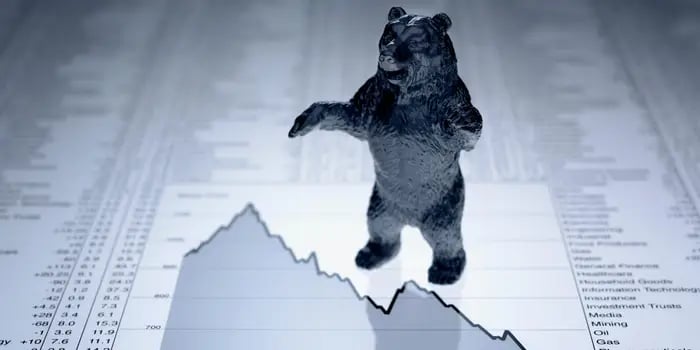Add your promotional text...
Is a Bear Market Coming in 2025? A Comprehensive Look at Market Sentiment, Risks, and Opportunities
Synopsis: As 2025 begins with volatility, concerns about a potential bear market are rising. This blog explores the factors that drive market sentiment, the risks of a downturn, and actionable strategies for investors to navigate uncertainty. Discover how to protect your portfolio and uncover opportunities.
ANALYSIS AND OPINION
By Vikas Purohit
1/7/20252 min read


The Market Landscape in Early 2025
The start of 2025 has been tumultuous for equity markets. After a strong rally in the first trading days, the stock market took a hit, dampening investor sentiment. This followed a challenging 2024 correction, raising hopes that the upcoming budget might introduce policies like tax cuts to spur growth.
However, fears surrounding the new HPMV virus, recently detected in India, have overshadowed these expectations. Markets dislike uncertainty, and this new threat has compounded with persistent selling by foreign institutional investors, making life tough for bulls.
While a bear market may not be imminent, the lack of positive sentiment is fueling concerns. What drives these shifts in market sentiment? Could 2025 witness a bear market? Let’s dive deeper.
Understanding Bear Markets
A bear market is defined by a decline of over 20% from market peaks, often triggered by a significant shift in sentiment from optimism to fear. The cycle begins when investors anticipate losses and sell en masse, driving prices lower and creating a self-fulfilling prophecy.
Bear markets vary in duration, from a few months, like during the COVID-19 pandemic in 2020, to several years, such as after the tech bubble burst in the late 1990s.
But what triggers these sentiment changes?
Key Triggers for Market Downturns
Economic Factors:
Weak GDP growth
Rising inflation or crude oil prices
High interest rates
Geopolitical Risks:
Escalating conflicts, such as the wars in Ukraine or West Asia
Tensions over Taiwan or Iran
Pandemics and Black Swan Events:
Unforeseen crises like COVID-19 or the newly emerging HPMV virus
Policy Shifts:
Restrictive government policies
Central bank actions, including rate hikes
These triggers can act individually or combine to create significant market disruptions.
Could 2025 See a Bear Market?
While predicting market movements with certainty is impossible, 2025 does present a confluence of risks:
The possibility of geopolitical escalations
Fears of a new pandemic causing lockdowns
Economic uncertainty fueled by inflation and tightening monetary policies
Each of these factors could spark a downturn.
How Investors Should Prepare
1. Reassess Your Portfolio
Examine your holdings and eliminate:
Junk stocks: Companies with poor fundamentals, high debt, or weak growth prospects.
Overvalued stocks: Those with high PE or PB ratios but average fundamentals.
2. Prioritize Quality
Focus on high-quality stocks with strong fundamentals, solid growth trajectories, and resilient business models.
3. Diversify Investments
Spread your portfolio across asset classes, sectors, and geographies to minimize risk.
4. Stay Informed
Keep abreast of market developments and geopolitical risks to anticipate potential impacts.
Long-Term Perspective: The Key to Success
While market volatility can be unsettling, long-term investors should remain focused on quality and avoid panic-driven decisions. Bear markets are a natural part of market cycles, and those who stay disciplined often emerge stronger.
Disclaimer: This blog is for informational purposes only and does not constitute financial advice. Consult a professional advisor for personalized recommendations.
